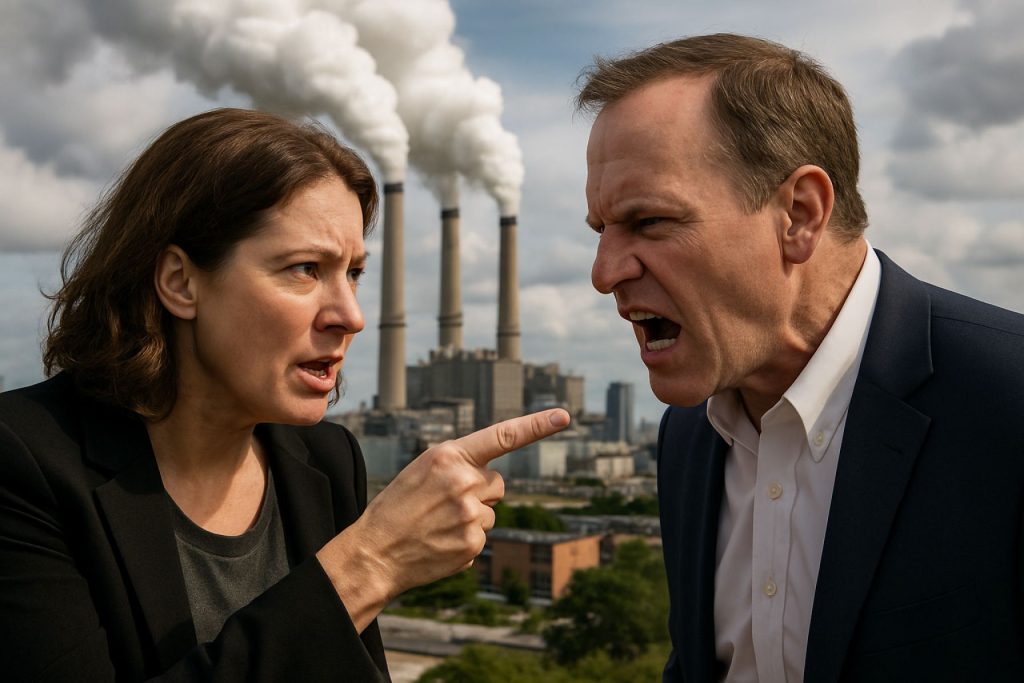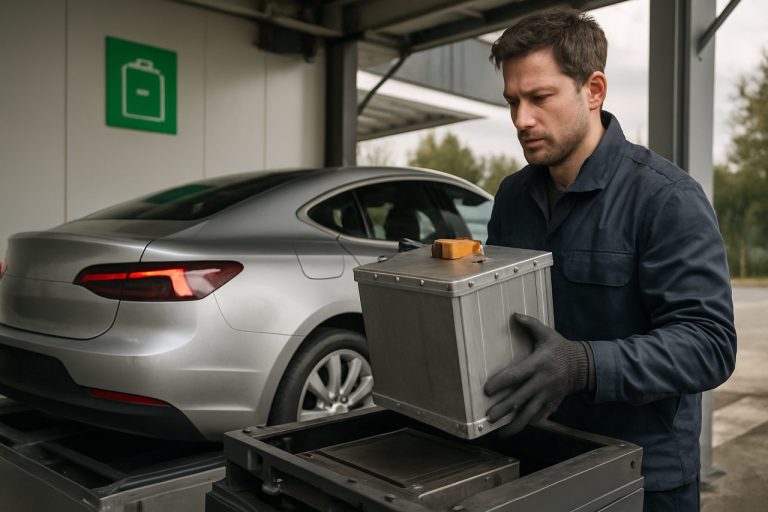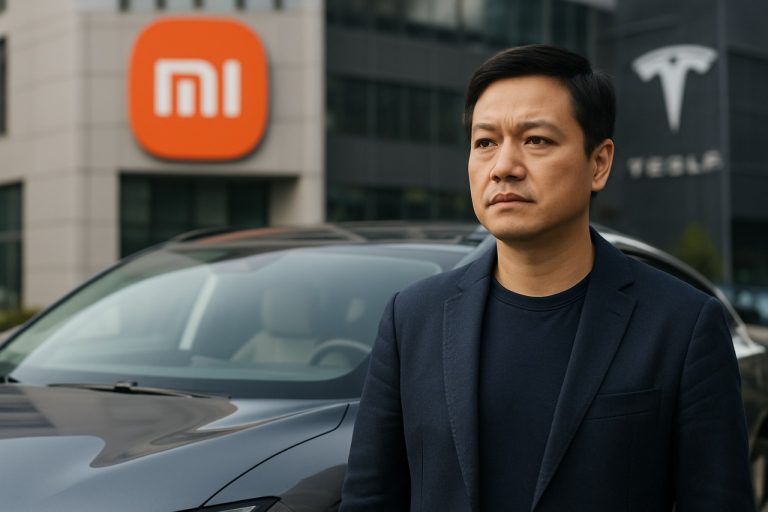
- California drives U.S. environmental policy with its strict vehicle emission standards and pioneering electric vehicle (EV) adoption.
- The state’s regulations were born out of a dire air pollution crisis, leading to cleaner air and a surge in EV sales—nearly 25% of new cars by 2023.
- This leadership sparks political tension, notably between California and states reliant on oil and traditional manufacturing, highlighting ongoing debates over state versus federal authority.
- Over a dozen states have followed California’s emissions standards, forcing automakers to invest more in electric technologies and reshape the American auto industry.
- The controversy underscores a pivotal struggle over clean air authority and who sets the country’s environmental agenda as America transitions to a low-emissions future.
A gentle fog envelops California’s freeways most mornings, barely concealing the constant, humming stream of vehicles—and a deeper transformation in motion underneath. California has long shaped how America breathes. For over 50 years, the state has leveraged unique power granted by federal waivers to carve out fiercely stringent pollution standards, setting a pace that much of the nation, and automakers across the globe, have inevitably followed.
The state’s anti-smog crusade did not begin on a whim. California’s notorious air pollution—the infamous “smog days” of Los Angeles—once scarred children’s lungs and choked city skylines. By enacting tougher regulations than the rest of the country, California saw tangible improvements: cleaner air, more fuel-efficient vehicles, and, over time, a radical shift toward electric technology. The numbers speak volumes—by 2023, electric vehicle sales made up nearly one in four new car registrations in California.
That ambitious push, though, has ignited national discord. Many Republican-led states, whose economies are entwined with oil and traditional manufacturing, bristle at what they view as California’s outsized influence and progressive zeal. When Congress voted to reel in California’s authority to craft its own electric vehicle mandates, it sent ripples through the political climate, underscoring a perennial tension: states’ rights versus federal supremacy.
At the core, it’s a debate about the future—of energy, of health, and of who gets to decide. Supporters argue California earns its special status through necessity and innovation: its air pollution crisis spurred decades of reforms that now lead the market. Critics, meanwhile, rally around the notion of fairness, asking why one state should dictate policies that ripple nationwide. The phrase “superstate” rings in congressional halls, a badge for some, a slur for others.
Yet California is undeterred. Governor Gavin Newsom has vowed to battle in the courts, defending what the state sees as both tradition and obligation. Inside the headquarters of California’s clean-air regulatory agency, an evocative sculpture—a fossilized gas station in limestone—serves as a monument to what officials believe is the inevitable extinction of fossil fuels.
The real impact extends far beyond symbolism. Thanks primarily to California’s lead, more than a dozen states have chosen to adopt its rigorous standards, forcing the automotive industry to overhaul production plans, turbocharge investment in electric platforms, and rethink what the “American car” really means.
This tug-of-war over California’s clean air authority isn’t just bureaucratic wrangling—it’s a critical juncture that will define what powers states hold as the country races toward an electrified, low-emissions future.
As the nation watches a single state’s vision spark both resentment and progress, one thing is clear: the future of clean air is being shaped not just by technology, but by the battle over who gets to lead the way.
Discover more about America’s environmental policies and their nationwide impact at EPA.gov.
California’s Clean-Air Revolution: Secret Forces Shaping America’s Drive Toward an Electric Future
California’s Crusade for Clean Air: Unpacking the Influence and the Fallout
California’s bold stance on air quality and electric vehicle standards is more than a state-level policy—it’s a national and global trendsetter fueling technological innovation, political conflict, and economic disruption. While the source article outlines the major milestones, here are additional, crucial facts and insights that deepen the picture, reveal hidden dynamics, and answer your burning questions about California’s clean-air revolution.
—
1. What Makes California’s Authority Unique?
– Federal Clean Air Act Waivers: Since 1970, Section 209 of the Clean Air Act has allowed California to set its own emission standards stricter than federal limits. Other states can choose to follow California, but not set independent rules ([EPA.gov](https://www.epa.gov)).
– Judicial Showdowns: California’s waivers have repeatedly faced federal challenges, especially during the Trump administration, which attempted to revoke them—a move reversed by the Biden administration in 2022.
– Nationwide Ripple: Today, 17 states and D.C. follow all or part of California’s rules—together representing over 40% of the US auto market.
—
2. Real-World Use Cases and Market Shifts
– Consumer Impact: California residents benefit from more EV options, state incentives (like up to $7,500 off new EVs), and broader charging infrastructure than most states.
– Automaker Strategies: Companies such as Ford, GM, and Volkswagen now prioritize EV development to meet California and aligned state markets, reshaping global supply chains.
– Emissions Reductions: LA smog alerts dropped from over 100 per year in the 1970s to near zero today, and data shows children’s asthma rates have fallen alongside emissions ([California Air Resources Board](https://ww2.arb.ca.gov)).
—
3. Electric Vehicle Growth: By the Numbers
– Current Market: Nearly 25% of new cars sold in California in 2023 were EVs or plug-in hybrids—more than double the national average (about 12%).
– 2035 Ban on Gasoline Cars: By executive order, California intends to end sales of new gasoline-only vehicles by 2035, accelerating industry electrification.
– Charging Network: California leads with over 87,000 charging ports, making EV ownership more practical for consumers (U.S. Dept of Energy data).
—
4. Controversies, Limitations, and Criticisms
– Economic Trade-Offs: Critics argue that stricter mandates could raise vehicle costs, burden rural/low-income residents, and challenge grid capacity.
– Oil Economy Pushback: Oil-producing states warn of lost jobs and tax revenue.
– Supply Chain Risks: EV batteries require rare minerals, most sourced from overseas, raising environmental and ethical concerns.
– Grid Preparedness: Recent California energy crises stir worries about whether the grid can support millions of EVs.
—
5. Comparative Global Leadership
– California vs. Europe & China: California’s market is often compared to Norway, Germany, and China in shifting EV adoption and emission standards.
– International Inspiration: Several countries have adopted “California-style” zero-emission or low-emission vehicle programs.
—
6. Key Features, Specs, and Incentives
– Major Programs:
– Zero-Emission Vehicle (ZEV) Mandate: Automakers must increase their share of clean vehicles sold.
– Cap-and-Trade: Funds clean projects and low-income rebates.
– Consumer Benefits: HOV lane access, purchase rebates, and home charger incentives for residents.
—
7. Life Hacks & How-To: Get the Most From California’s Green Policies
– Want to Buy an EV? Check the Clean Vehicle Rebate Project and local utilities for stacking incentives.
– Charge Efficiently: Many workplaces offer free/discounted charging—use apps like ChargePoint and PlugShare to locate spots.
– Plan for 2035: Buying a new gasoline-only car now? Consider resale value down the road.
—
8. Security, Sustainability, and Predictions
– Data Privacy: Modern EVs are highly connected; California leads in EV cybersecurity and privacy standards.
– Environmental Gains: While EVs reduce tailpipe emissions, battery disposal and energy sourcing remain environmental challenges.
– Industry Trend: Analysts predict that EVs will make up over 50% of California new car sales before 2030, catalyzing national adoption ([BloombergNEF](https://about.bnef.com)).
—
9. Pressing Questions Answered
Q: Will all states have to follow California?
A: No, but given California’s market size, automakers often build vehicles to comply with its rules nationwide.
Q: Are EVs really cleaner given battery production?
A: Yes, over a vehicle’s lifetime, EVs emit less CO2—even factoring in battery manufacturing—especially as electricity shifts to renewables.
Q: Can the grid really handle all these EVs?
A: Utilities and California policymakers are investing billions in grid upgrades and “smart charging” programs but continued vigilance is needed.
—
10. Actionable Recommendations
– For Consumers:
– Explore state/local incentives before buying an EV.
– Consider home solar-plus-EV-charging for energy and cost savings.
– Stay informed on upcoming gas car phaseout deadlines.
– For Businesses:
– Fleet operators should look into California funding for electrification.
– Prepare for potential emission/supply changes if supplying auto manufacturers.
—
Final Thoughts: California’s Model—A Preview of America’s Air
The battle over California’s clean-air authority is more than local politics—it’s America’s testing ground for the future of mobility, public health, and innovation. With stakes rising in courtrooms, legislatures, and on city streets, expect the Golden State to remain a bellwether for the next wave of automotive and environmental policy.
For further reading on evolving air quality standards, vehicle incentives, and nationwide environmental policy, visit authoritative resources such as [EPA.gov](https://www.epa.gov).
—
Key Related Keywords: California EV mandates, Clean Air Act waiver, zero-emission vehicles, state vs federal pollution laws, electric car incentives, U.S. automotive policy trends



